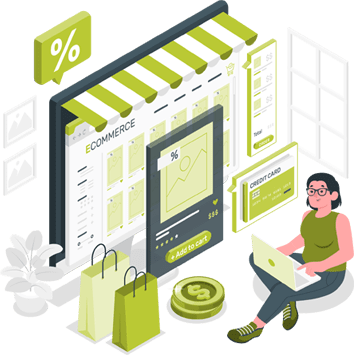
How Can Software as a Service Drive Your Digital Transformation Strategy?
13 November 2025
Going digital is no longer an optional decision for successful businesses. Today’s customers expect the speed and convenience that digital platforms offer, whether that’s online shopping or accessing a service on the go. Many global corporations have invested in digital transformation at the core of their business strategy, with good reason.
The term ‘digital transformation’ sounds like a big deal, and certainly, it’s one of the most important things you’ll ever do for your business. But it doesn’t need to cost the earth, nor does it mean ripping out your existing IT infrastructure. Software-as-a-Service (SaaS) is a model for providing modern, cloud-hosted solutions on a subscription basis. It enables even businesses with modest budgets to take the leap into digital innovation.
With SaaS technology, you don’t need to rebuild or reinvent the IT systems you already have in place. As a leading software development company, we can create SaaS solutions that will work with your company’s infrastructure, rather than replacing it.
In this blog, we explore both software as a service and digital transformation. We will explain how a suitable strategy can help you make the most of a SaaS-backed transformation strategy.
What is digital transformation?
Digital transformation is the adoption of new and empowering technologies into existing processes to revamp outdated systems. You can integrate advanced enterprise resource planning modules as per business needs. You can also adopt tools that streamline processes and drive productivity as well as growth.
What is software as a service?
SaaS, or Software as a Service, is a software distribution model where applications are hosted online and accessed via the internet. The applications are typically accessed through a web browser or app rather than being installed on individual devices. Users can pay a subscription fee for access, rather than purchasing a perpetual license.
Key features of SaaS:
- SaaS applications are hosted on the provider’s servers. They are accessed remotely and this eliminates the need for local installation and maintenance.
- Users need to pay a recurring fee (monthly or yearly) to access the software. Some SaaS applications like Gmail are free to use.
- Providers handle software updates. They ensure users always have access to the latest version without manual intervention.
- SaaS applications can be accessed from anywhere with an internet connection. They can run on various devices.
- SaaS solutions come with automated scalability. So, they can be scaled up or down based on user needs.
Common examples: Google Workspace (Docs, Sheets, Gmail), Microsoft 365, Dropbox, etc.
The SaaS industry continues to grow, with global revenue projected to reach $390 billion in 2025. SaaS is used by businesses of all sizes for things like communication, customer relationship management, accounting, HR, and project management.
Implementing SaaS in your business
Implementing a transformation strategy with SaaS requires careful planning and execution. Outsourcing software development can help you build SaaS applications that meet your needs at a cost-effective price. Here are some key best practices to follow when implementing SaaS:
- Identify your needs: Start by clearly defining your business objectives. You can choose a readymade SaaS solution that aligns with those goals. Alternatively, you can opt for bespoke SaaS software as a service development to cater to unique needs in a hassle-free way.
- Develop a clear implementation plan: It is vital to build a well-structured implementation roadmap. This will include timelines for data migration, user onboarding, and integration with any existing systems or workflows. This helps to ensure smooth adoption and plays a key role in the digital transformation success.
- Conduct rigorous testing: Before you go live with an integrated or bespoke SaaS application, you must conduct thorough testing to ensure the application works as expected and meets your business needs.
- Provide comprehensive training: If you are implementing new software for your employees, then training is essential to ensure smooth adoption. It will help your workforce to use the system confidently and maximise its capabilities.
- Monitor performance and adapt: Track usage, performance, and user feedback. Review regularly to assess whether the solution is still fit for purpose and make changes as needed.
Future of SaaS and digital transformation
As SaaS and digital transformation continue to evolve, here are some emerging trends to watch:
1. Artificial Intelligence (AI)
SaaS platforms can be built or integrated with AI and machine learning capabilities to ensure greater automation. You can also equip your systems with predictive insights and smarter decision-making across business functions.
2. Internet of Things (IoT)
With IoT-enabled SaaS solutions, you can support real-time data capture and analysis. This further improves responsiveness, operational visibility, and helps to deploy a well-connected experience.
3. Blockchain Technology
Integrating blockchain frameworks can ensure data integrity, transparency, and security. The demand for heavily secured SaaS solution is growing, especially in industries where high compliance and trust requirements are critical.
4. Edge Computing
As data grows, SaaS applications will start to adopt edge computing to process data closer to the source. SaaS providers can leverage Edge Computing to reduce latency and support real-time analytics for critical operations.
5. Quantum Computing
Although still in its infancy, quantum computing has huge potential for SaaS applications. It will revolutionise complex data analysis and optimisation tasks and enable capabilities beyond current computing power.
Conclusion
Businesses have to be agile. In a fast-changing world, you have to keep up with your customers’ demands. But adapting legacy software systems can take months or even years. SaaS gives you the agility to respond to market changes and evolve your digital options quickly as your business grows or pivots.
Scalability is a key feature of SaaS. You can start small and scale over time. This reduces the initial outlay and makes SaaS an affordable way to power your digital transformation.
The sky’s the limit with SaaS; businesses big and small can go in any direction. Choosing the right digital transformation strategy framework is essential, but it doesn’t have to be scary. At chilliapple, we can help guide your business into a digital future.




